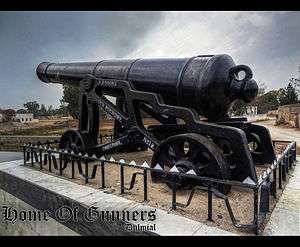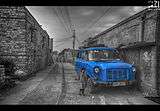Chakwal District has been bestowed by rich culture, history, art and extravagant environment. Once been known as a picnic spot for the Mughal dynasty and the British Lords also holds the record for producing fine men like Colonel Muhammad Khan, Tabish Kamal, India's prime minister Manmohan Sing and many other well reputed people.
Resting in the mountains of the salt range the valley of Kallar Kahar holds beautiful environment, dazzling scenery, wonderful historic and prehistoric spots and museums. Kallar Kahar has Pakistan's first fossil museum, But the mainstay of tourist attraction is the Kallar Kahar lake that lies in the heart of the valley. Other attraction spots are Bagh e sufa, Takht e Babri, the famous shrines and other gardens and mountain ranges.
Katas Raj
Katas Raj is a 3000-year-old town sacred to the Hindus and lies about 5 km west of Choa Saidan Shah on the Choa-Kallar Kahar road. It contains over 100 temples built over more than 1000 years by its Hindu Rajas. Some of these temples are dilapidated but a large number of them have been well maintained. Hindu pilgrims from all over Pakistan and India frequently visit this town to worship.
Katas Raj at its peak time was the well renowned university; famous mathematician Alberuni measured the circumference of the earth while he was studying the Sanskrit there.
Katasraj Mandir
Katas Raj Temple
General view of Katas village, with old temples in foreground, 1875.
General view of the complex.
Hari Singh Haveli at Satghara Temple (Original)
Hari Singh Haveli at Satghara Temple (Outer)
Hari Singh Havelie Walls (Semi Restored)
Hari Singh Haveli walls at Satghara Temple
(Left to Right) Ramachandra Temple, New Structure Built in 1950s, Berragi Haveli & Old Library Building
(Left to Right) Ramachandra Temple & New Structure Built in 1950sg
Berragi Haveli & Old Library Building
(Left to Right) Ramachandra Temple, New Structure Built in 1950s, Berragi Haveli & Old Library Building
Hanuman Temple At Satghara Temples
Hanuman Temple (Lower View)
Hanuman Temple (View from Below)
Katas Raj Temple ceiling
Temple exterior view
Baradari Building and Shiva Temple (L to R)
Shiva Temple at Satghara Temple (Worship Place)
Satghara Temple 180 degree view from top of Shiva Temple
Sassi da Kallara

They call it Sassi da Kallara, or simply Kaalar, and connect it to the popular legend of Sassi, the washerman’s daughter of Bhambore in Sindh, who here becomes a princess, and Punnu, the prince of Kech (Makran), who is transformed into a camel driver. Standing on the crest of a crumbly clay and sandstone ridge on the banks of the seasonal Leti Kas (Stream) in the extreme northwest corner of Talagang tehsil, the stubby ruin is visible from a distance. Built with large kiln fired bricks (440 mm to 480 mm x 260 mm x 50 mm), it is the only Hindu Shahya temple in the Salt Range to use this material. All others being constructed with porous, fossileferous limestone.
Situated at the very edge of the crumbly hill, the building raised above a high plinth of limestone blocks, is entered from the east via the remains of a portico that fell away years ago. Indeed, the erosion that undermined the entrance now threatens to sweep away the entire building. Inside, the floor of the cella has been partially dug up, very likely by treasure hunters. The walls, fortunately, are intact, above which the original roof has been replaced by a cement and steel dome - the brave attempt of some concerned archeologist to preserve the deteriorating structure.
Dulmial

Cannon Awarded by British Army World War II, Dulmial, Chakwal
Dulmial is 3 km from Katas Raj, a town which is very famous for the services rendered from its residents to all walks of life for Pakistan and also in British Army.[1] Dulmial is one of the two towns on Earth which was awarded with the Victoria Gun After World War I in 1920. The gun was received by Capt. Ghulam Mohammad Malik and other World War I veterans. Since the creation of Pakistan Dulmial has kept its reputation in the Pakistan Army as well, apart from the military services this town is also known for the reputation of its people working in high ranks in almost every important governmental and non-governmental organisations.
| Dulmial - A Pictorial View |
|---|
| Bestway Cement Factory Outside Dulmial |
| The Mohala 'Talli Paand' - Dulmial |
| Sunset At Bann (Pond) - Dulmial |
| The Bann (Pond) in Spring Season |
| Sun Set in Surroundings of Dulmial |
|
Bhaun
It is believed that this town is named after Raja Bhawan Singh the grandson of Raja Dahir after the defeat by Muhammad Bin Qasim in Sindh.
During British Rule, Chakwal was a tehsile of Jhelum District, the population of Bhaun according to the 1901 census of India was 5,340. It was biggest town of the district, population as well as area wise. During British rule and prior to the creation of Pakistan in 1947, the majority of the population were Muslims but economic and social hold was in the hands of Hindus. There are still many Hindu temples in Bhaun. Pre-partition it was centre of economic activities and though not declared yet it was a Mandi. It was centre for Dhan, Vanhar and Soon. A special Judge with the powers of Magistrate used to hold his court in Bhaun.
Dams
The small dams around the city have become picnic spots for their beauty. Some of the famous dams are:
- Dhok Taalian Dam
- Naka Dam Kallar Kahar
- Kot Raja Dam
- Khokhar Zer Dam
- Dharabi Dam
- Arrar Mughlan Dam (under construction)
- Maswaal/Ghazial Dam
- Lakhwal Dam
- Mial Dam
- Baghtal Dam
- Khai Dam
- Walana Dam
See also
References
- ↑ Wisdom and Waste in the Punjab Village, by M.L. Darling 1934, Page 51, "the Awan village of Dulmial close by produced more recruits in the war than any other village in India : 460 served out of a population (in 1921) of only 879 males"
 Takht-e-Babri
Takht-e-Babri Katas Raj Temple
Katas Raj Temple General view of Katas village, with old temples in foreground, 1875.
General view of Katas village, with old temples in foreground, 1875. General view of the complex.
General view of the complex..jpg) Hari Singh Haveli at Satghara Temple (Original)
Hari Singh Haveli at Satghara Temple (Original).jpg) Hari Singh Haveli at Satghara Temple (Outer)
Hari Singh Haveli at Satghara Temple (Outer).jpg) Hari Singh Havelie Walls (Semi Restored)
Hari Singh Havelie Walls (Semi Restored) Hari Singh Haveli walls at Satghara Temple
Hari Singh Haveli walls at Satghara Temple (Left to Right) Ramachandra Temple, New Structure Built in 1950s, Berragi Haveli & Old Library Building
(Left to Right) Ramachandra Temple, New Structure Built in 1950s, Berragi Haveli & Old Library Building (Left to Right) Ramachandra Temple & New Structure Built in 1950sg
(Left to Right) Ramachandra Temple & New Structure Built in 1950sg Berragi Haveli & Old Library Building
Berragi Haveli & Old Library Building (Left to Right) Ramachandra Temple, New Structure Built in 1950s, Berragi Haveli & Old Library Building
(Left to Right) Ramachandra Temple, New Structure Built in 1950s, Berragi Haveli & Old Library Building Hanuman Temple At Satghara Temples
Hanuman Temple At Satghara Temples.jpg) Hanuman Temple (Lower View)
Hanuman Temple (Lower View) Hanuman Temple (View from Below)
Hanuman Temple (View from Below) Baradari Building and Shiva Temple (L to R)
Baradari Building and Shiva Temple (L to R) Shiva Temple at Satghara Temple (Worship Place)
Shiva Temple at Satghara Temple (Worship Place) Satghara Temple 180 degree view from top of Shiva Temple
Satghara Temple 180 degree view from top of Shiva Temple







.jpg)
.jpg)